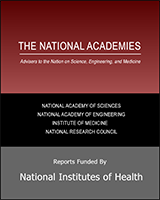NCBI Bookshelf. A service of the National Library of Medicine, National Institutes of Health.
Excerpt
As part of the critical infrastructure of any community, health systems and assets are vital not only for the safety and well-being of its citizens, but also for the economic vitality, quality of life, and livelihood of the entire community. Many elements required for recovery are also fundamental to the day-to-day operations of these systems (e.g., information sharing, identifying and leveraging existing capabilities of medical providers in a community, developing trusted relationships). Investing in improved health care delivery systems, both financially and through collaborative capacity building, can enhance economic development and growth before a disaster, and also prove instrumental in sustaining services and recovering after a disaster.
While the impacted local communities are the first responders and the drivers of long-term recovery, this session also discussed the important supportive roles played by the federal government, the private sector, nongovernmental organizations (NGOs), and state officials. Specifically, the session was designed to engage representatives from federal, state, and local governments, and the nonprofit and private sectors to do the following:
- Identify services necessary to maintain or improve the affected health care service delivery infrastructure to ensure it meets the long-term physical and behavioral health needs of affected populations.
- Discuss the roles and functions of the relevant Recovery Support Functions in facilitating long-term recovery of the health care service delivery infrastructure.
- Highlight lessons learned from previous disasters, and identify priorities for pre-incident operational plans, with a specific focus on opportunities to leverage programs and activities across the public, private, and nonprofit sectors that support long-term recovery and mass casualty care.
Contents
Rapporteurs: Theresa Wizemann, Bruce M. Altevogt
This study was supported by contracts between the National Academy of Sciences and the American College of Emergency Physicians; American Hospital Association; American Medical Association; American Nurses Association; Association of State and Territorial Health Officials; Centers for Disease Control and Prevention (Contract No. 2002005- 13434 TO #6); Department of the Army (Contract No. W81XWH-08-P-0934); Department of Health and Human Services' National Institutes of Health (Contract No. N01-OD-4-2139 TO #198 and TO #244); Department of Health and Human Services' Office of the Assistant Secretary for Preparedness and Response (Contract Nos. HHSP233200900680P, HHS P23320042509X1); Department of Homeland Security's Federal Emergency Management Agency (Contract No. HSFEHQ-08-P-1800); Department of Homeland Security's Office of Health Affairs (Contract No. HSHQDC-07-C00097); Department of Transportation's National Highway Traffic Safety Administration (Contract No. DTNH22-10-H-00287); Department of Veterans Affairs (Contract No. V101(93)P-2136 TO #10); Emergency Nurses Association; National Association of Chain Drug Stores; National Association of County and City Health Officials; National Association of Emergency Medical Technicians; Pharmaceutical Research and Manufacturers of America; Robert Wood Johnson Foundation; and United Health Foundation.
Suggested citation:
IOM (Institute of Medicine). 2012. Post-incident recovery considerations of the health care service delivery infrastructure: Workshop summary. Washington, DC: The National Academies Press.
The views presented in this publication do not necessarily reflect the views of the organizations or agencies that provided support for the project.
NOTICE: The project that is the subject of this report was approved by the Governing Board of the National Research Council, whose members are drawn from the councils of the National Academy of Sciences, the National Academy of Engineering, and the Institute of Medicine. The members of the committee responsible for the report were chosen for their special competences and with regard for appropriate balance.
- NLM CatalogRelated NLM Catalog Entries
- Review Harnessing a community for sustainable disaster response and recovery: an operational model for integrating nongovernmental organizations.[Disaster Med Public Health Pre...]Review Harnessing a community for sustainable disaster response and recovery: an operational model for integrating nongovernmental organizations.Acosta J, Chandra A. Disaster Med Public Health Prep. 2013 Aug; 7(4):361-8.
- Review Healthy, Resilient, and Sustainable Communities After Disasters: Strategies, Opportunities, and Planning for Recovery[ 2015]Review Healthy, Resilient, and Sustainable Communities After Disasters: Strategies, Opportunities, and Planning for RecoveryCommittee on Post-Disaster Recovery of a Community's Public Health, Medical, and Social Services, Board on Health Sciences Policy, Institute of Medicine. 2015 Sep 10
- Perspectives from nongovernmental organizations on education and training needs for community disaster recovery.[J Emerg Manag. 2019]Perspectives from nongovernmental organizations on education and training needs for community disaster recovery.Meyer MA, Purdum JC, Breen K, Aggrey JK, Forrest D, Nunez C, Peacock WG. J Emerg Manag. 2019 May/Jun; 17(3):225-238.
- The NCI All Ireland Cancer Conference.[Oncologist. 1999]The NCI All Ireland Cancer Conference.Johnston PG, Daly PA, Liu E. Oncologist. 1999; 4(4):275-277.
- Review Nongovernmental resources to support disaster preparedness, response, and recovery.[Disaster Med Public Health Pre...]Review Nongovernmental resources to support disaster preparedness, response, and recovery.Acosta JD, Chandra A, Ringel JS. Disaster Med Public Health Prep. 2013 Aug; 7(4):348-53.
- Post-Incident Recovery Considerations of the Health Care Service Delivery Infras...Post-Incident Recovery Considerations of the Health Care Service Delivery Infrastructure
Your browsing activity is empty.
Activity recording is turned off.
See more...
